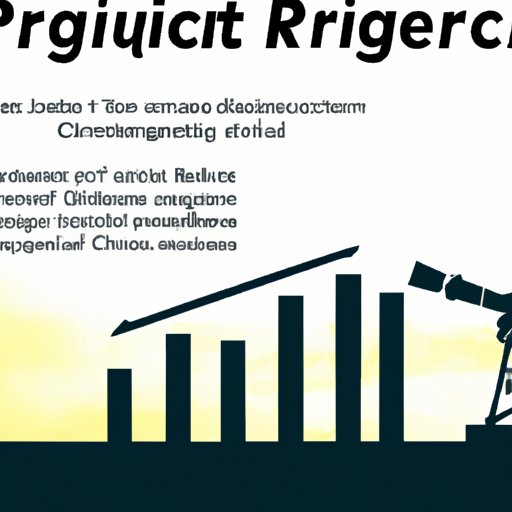Introduction
Market research is the process of gathering and analyzing data about your target customers, industry trends, and competitors. It is an essential step for businesses to understand the market and identify potential opportunities. Conducting thorough market research can help you shape the direction of your business, boost its competitive advantage, inform product development, and more.

Develop a Market Research Plan
The first step in conducting market research is to develop a plan. This should include setting clear objectives, outlining the budget, and choosing the right methodology.
Identify Your Goals
Start by defining your goals. What do you want to learn from market research? Are you looking to assess customer demand for a new product or service? Or are you trying to understand how to better position your brand in the market? Establishing a goal will help guide your research and make it easier to measure the results.
Set a Budget
Your market research budget will depend on the type of research you’re conducting and the resources available. For example, if you’re planning to launch a survey, you’ll need to allocate funds for software, incentives, and staffing costs. On the other hand, if you’re researching competitors, you may be able to get the information you need online for free.
Choose the Right Methodology
Once you have identified your goals and allocated a budget, you can select the best methods for collecting data. Depending on your objectives, you may want to consider surveys, interviews, focus groups, or competitor analysis. Consider the pros and cons of each method before you decide which one is most appropriate for your needs.

Identify Target Customers and Their Needs
When conducting market research, you should also focus on understanding your target customers and their needs. Knowing who your customers are and what they care about will help you develop effective strategies and create products that meet their needs.
Analyze Demographics
Demographic data can provide valuable insights into your target customer base. By analyzing age, gender, location, income level, education, and other factors, you can develop a better understanding of who your customers are and what their needs may be.
Understand Buying Habits
Researching buying habits can also give you valuable insights into customer behavior. For example, you can use data from previous purchases to understand what products your customers prefer and when they are most likely to buy them. This information can help you tailor your marketing efforts and optimize your product offering.
Research Customer Pain Points
In addition to understanding customer demographics and buying habits, you should also research customer pain points. Analyzing customer feedback and reviews can help you identify areas where customers are dissatisfied with existing products and services, as well as potential opportunities for innovation.
Analyze Competitors and Their Strategies
Another important aspect of market research is analyzing competitors and their strategies. Understanding what your competitors are doing can help you stay one step ahead and identify opportunities to differentiate your business.
Identify Direct and Indirect Competition
Start by identifying direct and indirect competition. Direct competitors offer similar products or services, while indirect competitors offer different solutions to the same problem. Knowing who you’re competing against will help you understand the market and develop effective strategies.
Analyze Competitor Strengths and Weaknesses
Next, you should analyze the strengths and weaknesses of your competitors. Consider factors such as pricing, customer service, product quality, and branding. Identifying the strengths and weaknesses of your competitors will help you understand their positioning in the market and determine how to differentiate your business.
Assess Your Competitive Advantage
Finally, assess your competitive advantage. How does your business stand out from the competition? What unique value do you offer to customers? Understanding your unique selling proposition can help you craft effective messaging and create products and services that stand out in the market.

Research Pricing and Trends in the Industry
It’s also important to research pricing and trends in the industry. Tracking prices over time can help you develop pricing strategies and understand consumer preferences. Monitoring industry trends can also help you identify opportunities to innovate and stay ahead of the competition.
Track Prices Over Time
By tracking prices over time, you can gain insight into consumer spending habits and understand how prices affect demand. You can also use this information to adjust your pricing strategy and ensure you remain competitive in the market.
Monitor Industry Trends
Monitoring industry trends is another important part of market research. Pay attention to changes in technology, consumer preferences, regulations, and the competitive landscape. This will help you identify potential opportunities and threats and stay ahead of the competition.
Conduct Surveys and Focus Groups
Surveys and focus groups are two of the most common methods for collecting customer feedback. They can provide valuable insights into customer needs and perceptions of your brand.
Design Questions to Get Insightful Answers
When designing survey questions, it’s important to think carefully about the questions you ask. Make sure the questions are specific and focused on getting meaningful information. Avoid leading questions or those that are too broad.
Use an Online Survey Tool
You can use an online survey tool to distribute the survey and collect responses. There are many tools available, such as SurveyMonkey and Typeform, which offer features such as skip logic, branching, and custom reporting. Choose a tool that meets your needs and budget.
Utilize Focus Groups
Focus groups are another useful method for collecting customer feedback. They allow you to gather qualitative data in an interactive setting. When selecting participants, look for people who represent your target customer base and have relevant experience.
Analyze Customer Feedback
Customer feedback is a valuable source of information, so it’s important to analyze it carefully. Review online reviews, customer surveys, and social media posts to gain insights into customer needs and preferences.
Review Online Reviews
Reading online reviews can help you understand how customers perceive your business and identify areas that need improvement. Look for patterns in the reviews and pay attention to any recurring themes.
Gather Customer Insights from Social Media
Social media can also provide valuable insights into customer needs and preferences. Monitor conversations on social media platforms to understand how customers feel about your brand and products. This will help you identify areas where you can improve and respond to customer feedback.
Utilize Social Media Analytics
Using social media analytics can help you track the performance of your campaigns and measure the success of your marketing efforts. These tools can provide insights into customer engagement, reach, and conversion rates.
Set Up Tracking Tools
Set up tracking tools to monitor key metrics such as likes, shares, comments, and followers. This will help you understand how customers are engaging with your content and identify opportunities to optimize your campaigns.
Measure Engagement
Social media analytics can also help you measure engagement. Track the number of interactions with your posts and measure how quickly customers are responding. This will help you understand how effective your campaigns are and identify areas for improvement.
Analyze Competitor Performance
Finally, use social media analytics to analyze the performance of your competitors. This will help you understand their strategies and identify opportunities to differentiate your business.
Conclusion
Market research is an essential step for any business. It helps you understand the market, identify customer needs, analyze competitors, and develop effective strategies. To get the most out of your market research, develop a plan, set a budget, choose the right methodology, and utilize surveys, focus groups, customer feedback, and social media analytics.
(Note: Is this article not meeting your expectations? Do you have knowledge or insights to share? Unlock new opportunities and expand your reach by joining our authors team. Click Registration to join us and share your expertise with our readers.)
